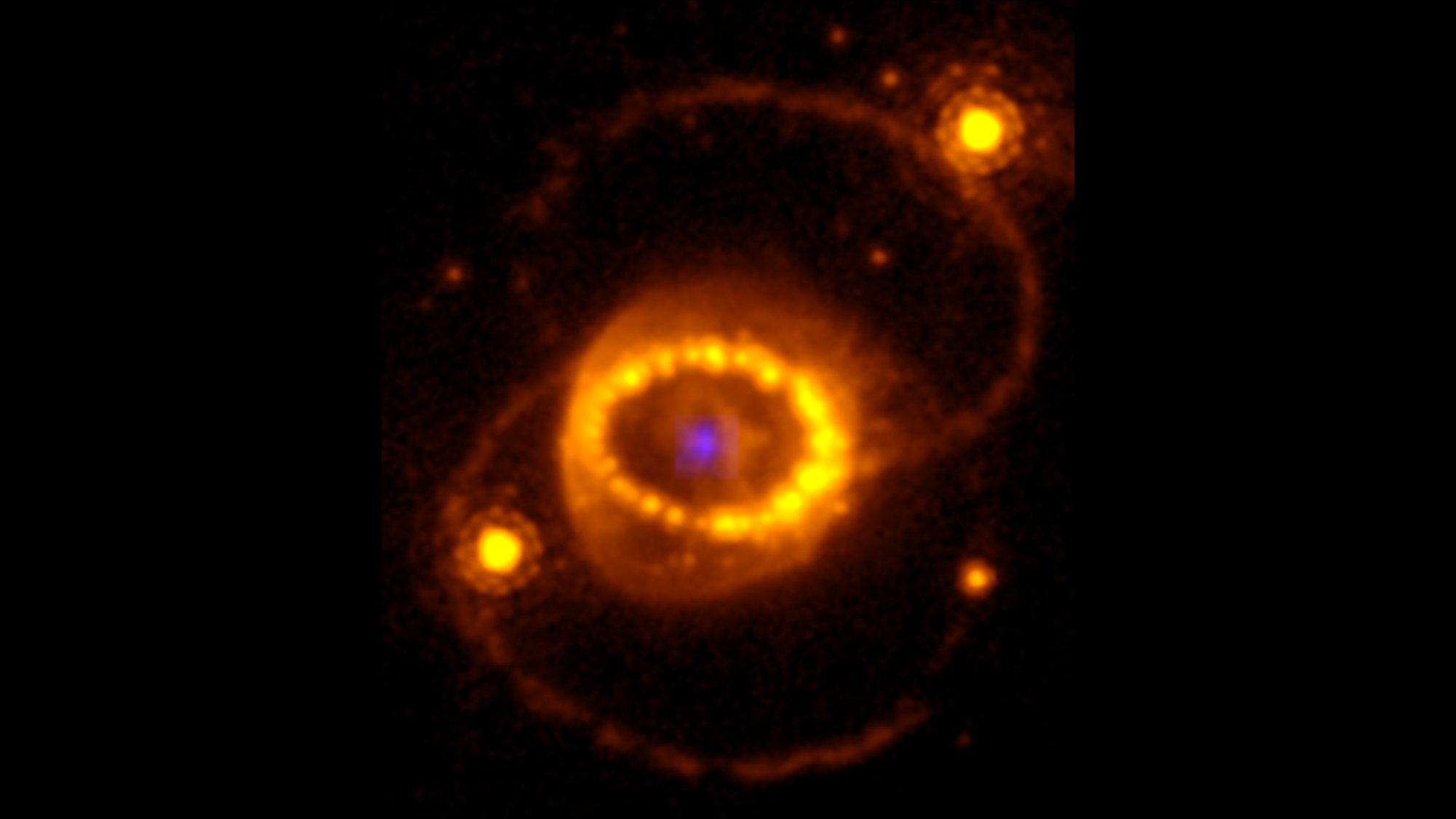

Astronomers using the James Webb Space Telescope (JWST) may be the winners of a mysterious 37-year-long game of hide-and-seek and solved a stellar death mystery in the process. They detected the best known evidence for a neutron star laying in the remnants of one of the most famous supernovae in space.
This massive star explosion created so much debris that it took several years and one of the most powerful space telescopes ever created to peer through the wreckage of its stellar death. The findings are detailed in a study published February 22 in the journal Science and advances the study of these dramatic celestial deaths.
“The mystery over whether a neutron star is hiding in the dust has lasted for more than 30 years and it is exciting that we have solved it,” study co-author and University College London astrophysicist Mike Barlow said in a statement.
[Related: An amateur astronomer spotted a new supernova remarkably close to Earth.]
What is a supernova?
A supernova is the explosive final death of some of the most massive stars in the known universe. They occur in stars that are eight to 10 times the mass of our sun, so it can take years for all of that gas and energy to collapse in on itself. Its final initial death blows can end within a few hours, but the brightness of the explosion will generally peak within a few months. Importantly, supernovae offer a way for scientists to study a key astronomical process in real time. Explosions like these fill space with the iron, silicon, carbon, and oxygen that build future stars and planets. They can even create the molecules that create life.
In the study, the team looked at Supernova (SN) 1987A. This well known supernova occurred 160,000 light-years from Earth in a region called the Large Magellanic Cloud. Its light was first observed on Earth in February 1987, with its brightness peaking that May. It was the first supernova that could be seen with the naked eye since Kepler’s Supernova in 1604.
“Supernovae are the main sources of chemical elements that make life possible–so we want to get our models of them right,” said Barlow. “There is no other object like the neutron star in Supernova 1987A, so close to us and having formed so recently. Because the material surrounding it is expanding, we will see more of it as time goes on.”

SN 1987A is also considered a core-collapse supernova, where its compacted remains could form a neutron star or a black hole. Some incredibly small subatomic particles produced by the supernova called neutrinos indicated that a neutron star may have formed. However, in the almost 40 years since SN 1987A was detected, it has not been clear if this neutron star persisted or collapsed into a black hole. The star has been hidden by dust from the explosion.
How JWST confirmed a neutron star
The observations for this work were taken on July 16, 2022, just after the space telescope became operational. The team in the study used JWST instruments–MIRI and NIRSpec–that can observe the supernova at infrared wavelengths to peer beyond the dust. They found evidence of heavy argon and sulfur atoms whose outer electrons had been stripped off near where the explosion occurred. This process is called ionization.
[Related: See the stunning Supernova 1987A in a whole new light.]
They modeled multiple scenarios and found that the atoms may have been ionized by ultraviolet and X-ray radiation from a hot cooling neutron star. It also could have been due to the winds of relativistic particles that were accelerated by a quickly rotating neutron star and interacting with material from the supernova.
“Our detection with James Webb’s MIRI and NIRSpec spectrometers of strong ionized argon and sulfur emission lines from the very center of the nebula that surrounds Supernova 1987A is direct evidence of the presence of a central source of ionizing radiation,” said Barlow. “Our data can only be fitted with a neutron star as the power source of that ionizing radiation.”
The findings are consistent with several theories about how neutron stars form. Models suggest that sulfur and argon are produced in large amounts inside of a dying star just before it goes supernova. Scientists studying SN 1987A and other supernovae predicted that ultraviolet and X-radiation in a supernova remnant would indicate that a newborn neutron star was present. Now, using ultraviolet and X-ray radiation was what helped us find it.
“This supernova keeps offering us surprises,” study co-author and Sweden Royal Institute of Technology astrophysicist Josefin Larsson said in a statement. “Nobody had predicted that the compact object would be detected through a super strong emission line from argon, so it’s kind of amusing that that’s how we found it in the JWST.”
